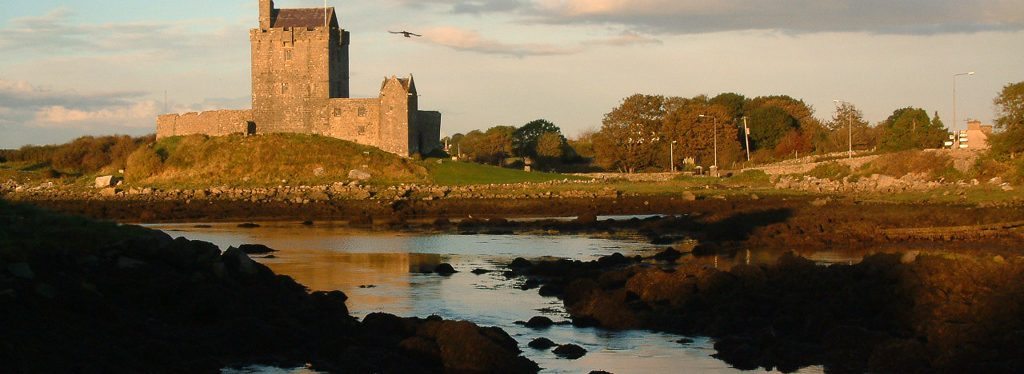Built & Cultural Heritage
The Burren has been aptly described as one ‘vast memorial to bygone cultures’. The wealth and diversity of its archaeological landscape is remarkable. This array of monuments, coupled with the historical records, allows us to trace the evolution of Burren society from its ‘hunter-gatherer’ origins over six millennia ago to the present day. However, the cultural landscape of the Burren is not a fossilised entity composed of ancient tombs and stone forts; the region is one of the most vibrant and diverse cultural landscapes in Ireland, home to a wide range of artists, craftspeople and entertainers who together account for the rich and varied cultural output that does justice to this wonderful place. Local farming traditions have also played a significant role in the areas cultural identity, as well as manifesting in a variety of structures often seen, and not always understood!
Archaeology
Travel back in time to discover the over 80 known Neolithic tombs that have been found in the region, the hundreds of ancient cooking sites or fulachta fiadh and ancient cist graves throughout the hills, the 500 ring forts, the Tower houses and Early Christian church sites; only a small portion of an extraordinary wealth of archaeological heritage to be found in the Burren.
History
This record in stone is supplemented by a strong written record, dating back as far as the Annals of the Four Masters which recorded information from as far back as the early Christian Period. These written records tell a fascinating story, from the Medieval Period when the Burren contained vast sheep walks owned by the landed classes, to the unspeakable tragedy of the Famine when the land and its people were laid bare.
Culture
Whether it’s a traditional music session, high quality art galleries or a strong literary tradition, the Burren has a lot to offer for the interested culture seeker. Many visual artists have been inspired by the sweeping grey landscapes of the Burren, and by the rich flora and ancient monuments found scattered throughout. The Burren also has a fascinating literary heritage, much of it focused on the New Quay – Finnevarra area, once home to the Bardic school of the O’Dalaighs.
Farming Traditions
Farming activity in the Burren has been moulded by the very individual limitations and strengths of the unique landscape, as is reflected in the evolution of practices such as winterage, herding and goat husbandry, and physical features such as rainwater troughs, shelter walls, goat crós and cahers, herdsmen’s houses, and isolated cattle-loading pens.
